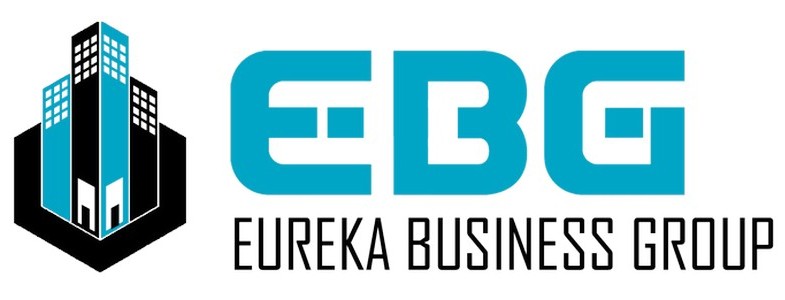- Home
- Commercial Broker Services
- Business Broker Services
- Business Owners Resources
- The New Retailer’s Roadmap to a Successful Space Hunt
The New Retailer’s Roadmap to a Successful Space Hunt
In the dynamic and ever-evolving landscape of retail, finding the perfect physical location for your store is crucial. With e-commerce giants dominating online sales, the importance of a well-chosen brick-and-mortar space can’t be overstated. This roadmap is designed to guide new retailers through the intricate process of securing a location that aligns with their business goals, enhances customer experience, and maximizes profitability.
Understanding Your Business Needs
Before embarking on the hunt for a retail space, it’s essential to have a clear understanding of your business needs. Consider the following factors:
Target Audience
Who are your primary customers? Understanding your target audience’s demographics, preferences, and shopping behaviors will help you choose a location that they frequent.
Store Size and Layout
Determine the optimal size for your store based on your product range and inventory needs. A boutique store may thrive in a smaller, more intimate setting, while a larger store might require a spacious layout to accommodate diverse product lines.
Budget
Establish a realistic budget for rent, utilities, and other associated costs. Keep in mind that high-traffic areas often come with a premium price tag, but the potential for increased sales can justify the expense.
Market Research
Analyze Competitors
Study your competitors’ locations. Are they situated in busy shopping districts, malls, or standalone buildings? Understanding where successful competitors operate can provide valuable insights.
Foot Traffic
High foot traffic areas, such as shopping malls or popular streets, can drive significant walk-in customers. However, these locations might also come with higher rents. Balance the potential benefits with the costs.
Accessibility
Consider the accessibility of the location for both customers and suppliers. Ample parking, proximity to public transportation, and ease of delivery are crucial factors that can influence customer satisfaction and operational efficiency.
Location Scouting
Retail Districts and Malls
Retail districts and malls offer a built-in customer base and shared marketing opportunities. However, they may also come with higher competition and stricter lease terms.
Standalone Locations
Standalone locations provide greater flexibility and unique branding opportunities. They often have lower rents compared to malls but may require more investment in marketing to drive traffic.
Emerging Neighborhoods
Emerging neighborhoods can offer lower rents and the potential for future growth. However, they might also come with uncertainties regarding foot traffic and long-term viability.
Evaluating Potential Spaces
Physical Inspection
Conduct a thorough physical inspection of potential spaces. Assess the condition of the property, necessary renovations, and compliance with zoning regulations and building codes.
Lease Terms
Carefully review the lease terms, including the length of the lease, rent escalation clauses, and any restrictions on signage or alterations. Consider negotiating terms that provide flexibility and protect your interests.
Community and Surroundings
Evaluate the surrounding community and amenities. A vibrant, welcoming community can attract more customers and enhance the shopping experience.
Legal and Financial Considerations
Hire a Real Estate Agent
A knowledgeable real estate agent can provide invaluable assistance in navigating the complexities of commercial leases and finding properties that meet your criteria.
Legal Counsel
Engage legal counsel to review lease agreements and ensure they are favorable to your business. Legal experts can identify potential pitfalls and negotiate better terms on your behalf.
Financial Planning
Develop a detailed financial plan that includes rent, utilities, maintenance, and other operational costs. Ensure you have sufficient capital to cover these expenses while maintaining profitability.
Design and Branding
Store Layout
Design a store layout that maximizes space efficiency and enhances the customer experience. Consider the flow of foot traffic, product placement, and visual merchandising to create an inviting atmosphere.
Branding
Your retail space should reflect your brand’s identity. Invest in high-quality signage, fixtures, and décor that convey your brand message and appeal to your target audience.
Technology Integration
Incorporate technology to enhance the shopping experience. Point-of-sale systems, inventory management software, and customer relationship management tools can streamline operations and improve customer service.
Marketing and Promotion
Grand Opening
Plan a grand opening event to generate buzz and attract customers. Offer promotions, discounts, and special events to encourage attendance and drive sales.
Local Marketing
Engage in local marketing efforts to build awareness and attract foot traffic. Utilize social media, local advertising, and community events to connect with potential customers.
Partnerships
Form partnerships with neighboring businesses to cross-promote and drive traffic. Collaborative marketing efforts can benefit all parties involved and create a sense of community.
Ongoing Evaluation and Adaptation
Monitor Performance
Regularly monitor the performance of your retail space. Track sales, foot traffic, and customer feedback to identify areas for improvement.
Customer Feedback
Encourage and act on customer feedback. Understanding your customers’ needs and preferences can help you make informed decisions about product offerings, store layout, and marketing strategies.
Adapt and Evolve
The retail landscape is constantly changing. Stay informed about industry trends, emerging technologies, and shifts in consumer behavior. Be prepared to adapt and evolve your business to stay competitive and meet the changing needs of your customers.
Conclusion
The journey to finding the perfect retail space is multifaceted and requires careful planning, research, and strategic decision-making. By understanding your business needs, conducting thorough market research, evaluating potential spaces, and integrating strong design and branding elements, you can secure a location that not only meets but exceeds your business goals. Remember, the key to success in retail is not just finding a space but finding the right space that aligns with your vision and connects with your customers. Happy hunting!



